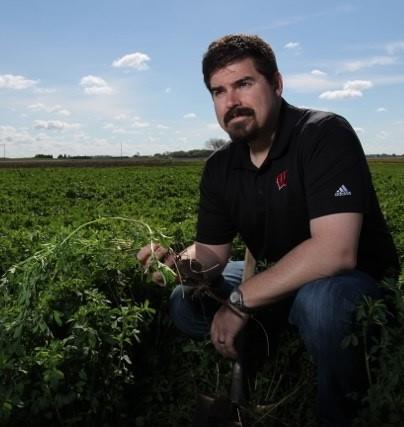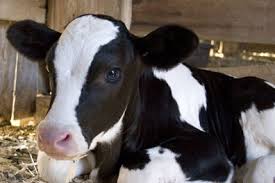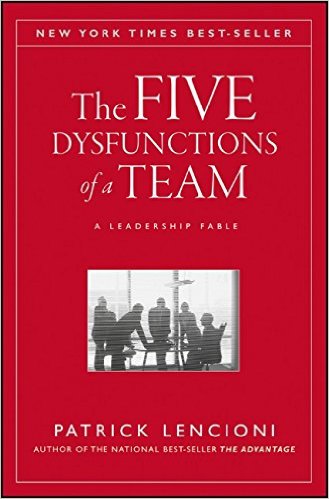|
Brought to you by Dairy's Professional Development Organization®
|
|
Opportunities to learn...
CALLING ALL COMMUNITY LEADERS AND DAIRY PRODUCERS. The ACE (Agricultural Community Engagement®) On-the-Farm Twilight Meetings are set for this month and are the ideal place to learn from each other. Brought to you by the Wisconsin Counties Association, Wisconsin Towns Association and Professional Dairy Producers (PDPW), these meetings are open to the public. In addition to a 60-minute tour of the hosting dairy, participants will enjoy an open dialogue focused on important issues and be treated to ice cream. All tours begin at 6 p.m. with discussions wrapping up by 8:30 p.m. Pick the date and location that works best for you: Monday, Aug. 22, Merry-Water Farms, Lake Geneva, Wis.; Tuesday, Aug. 23, Ruedinger Farms, Van Dyne, Wis.; Wednesday, Aug. 24, Maple Ridge Dairy, Stratford, Wis.; or Thursday, Aug. 25, Alfalawn Farm, Menomonie, Wis. To register, call Wisconsin Towns Association at 715-526-3157 or email them at [email protected]. To learn more about these events, click
here
.
THE DELIVERING COW & THE NEWBORN CALF
 will be the focus of a one-day hands-on workshop, taught exclusively in Spanish. The Spanish Obstetrics & Newborn Calf Workshop will be offered at two locations: Thursday, Sept. 22, Colby, Wis. and Friday, Sept. 23, Greenleaf, Wis. Oscar Duarte, DVM, will lead a "Delivering Cow" session and provide tips to ensure first-rate maternity care. During the "For the Newborn Calf" session dairy specialist Jorge Delgado will teach students to work with refractometers, serum samples and colostrum samples. Both hands-on sessions will grasp the "why" and "how" of this Dairy Obstetrics and Newborn Calf Care Workshop. The program will begin at 9 a.m. and conclude by 4 p.m. These interactive on-farm workshops will take your Spanish-speaking workers to a new level. Register online or call PDPW at 800-947-7379. To learn more click on
this link.

TIME IS STILL ON YOUR SIDE TO SECURE YOUR SPOT FOR THE COVER CROPS PDPW WORLD CLASS WEBINAR. Tune in for the PDPW World Class Webinar featuring Matthew Ruark, UW-Madison, Dept. of Soil Science, discussing "Making the Right Decisions with Cover Crops." Register now to explore the pros and cons of cover crops and learn the latest research that could make a difference in our business. In this webinar, Ruark will discuss erosion, nutrient capture, forage generation and understanding the climate as it pertains to
making realistic and obtainable goals. While this Webinar will be presented live on Wednesday, Aug. 17, between noon and 1 p.m. CDT, you can watch a fully recorded session at your leisure as long as you have pre-registered.
Click here to register or call PDPW at 800-947-7379.
|
For your dairy...
THERE'S A SIMPLE SOLUTION TO AVOID DECREASING PRODUCTIVITY AND PROFITABILITY: Control and prevent diseases by having an active vaccination program in place. "Beef and Dairy Cattle Vaccination Programs," prepared by G. Dewell, DVM, Beef Extension Veterinarian, Iowa State University, Veterinary Diagnostic and Production Animal Medicine, and Patrick Gorden, Senior Clinician, Iowa State University, Veterinary Diagnostic and Production Animal Medicine, outlines vaccination programs for neonatal calves, calves four to six months of age, pre-breeding heifers, pre-calving females and adult cows, as well as for steers and heifers run on pastures and in feedyards. Three key points: "Vaccination programs should be developed in cooperation with the herd veterinarian", "rigid recipes that fit all production units are impractical and even dangerous if not instituted in individual herds with professional care", and "improper use of vaccines can result in cattle that are not adequately immunized." You can download their four-page document at
this website.
NEW TECHNOLOGY IS A GREAT TATTLE TALE.
 Dr. Mike Hutjens, professor emeritus, University of Illinois, says technology
embedded
in rumination collars will tell you if a cow has optimal rumination time and activity and can alert you when a drop from normal rumination time occurs. If the technology indicates that your healthy cows are not reaching their optimal rumination time by six to seven days after calving, Hutjens says your transition feeding program may need fine-tuning. He adds that having rumination-time information may also allow dairy managers to measure a drop in dry matter intake prior to calving. "Rumination monitoring appears to be exciting technology on the dairy farm," Hutjens states. "It is critical that someone monitors and makes important management decisions using the valuable data on a daily basis." He urges dairy owners and managers to visit farms that are using this technology to determine if it is right for your dairy. You can read the seven questions Hutjens says need to be answered by future research and on-farm monitoring
by clicking here
.
HEAT STRESS CAN AFFECT MORE THAN A COW'S PRODUCTION. Research shows that heat stress in a cow in late gestation can result in 10 short- and long-term effects on her calf:
1) lower birth weights 
2) reduced starter intake
3) lower growth rate
4) impaired function of the placenta
5) lower hematocrit
6) altered glucose and fatty acid uptake and utilization
7) impaired passive and cell-mediated immune function
8) greater chance of leaving the herd prior to puberty
9) greater services per conception
10) lower milk production in first lactation
Rob Costello, Dairy Technical/Business Support Manager, Milk Specialties Global, delves into the reasons behind these negative effects, explains how cows respond to heat stress and offers nutritional strategies during heat stress and late gestation at this website.
|
AN ADDITIONAL 10 DEGREES CELSIUS FOR ONE SECOND may just add five, six or seven weeks of shelf life to cold milk, according to research conducted by Bruce Applegate, Purdue, and collaborators from Purdue and the University of Tennessee. Published in the journal
SpringerPlus
, the study involved a low-temperature, short-time method that sprays tiny droplets of pasteurized milk through a heated and pressurized chamber, rapidly raising and lowering their temperatures about 10 degrees Celsius but still below the 70-degree threshold needed for pasteurization. The treatment lowered bacterial levels below detection limits and extended shelf life to up to 63 days. Phillip Myer, who co-authored the paper, said the technology could reduce waste and allow milk to reach distant locations where transport times using only pasteurization would mean the milk would have a short shelf life upon arrival.
Learn more here
.
ANTIMICROBIAL RESISTANCE will be in the spotlight when global leaders meet next month at the United Nations General Assembly in New York to commit to fighting antimicrobial resistance (AMR) together. It is expected that a resolution will be adopted at the 71st Session in September which, if effective, could place national governments under pressure to take action towards reducing consumption of antibiotics in both human medicine and agriculture. While there has been no evidence of a direct link between antibiotic use in livestock and resistance seen in human medicine, it appears that antimicrobial usage in animal agriculture could further be impacted by this meeting. One Health Initiative's stand is "whatever action we take will only be sustainable if it is based on a sound understanding of the relative roles of people, animals and the environment in the emergence, spread and persistence of AMR genes." More on this topic was published in recent writings of the
Oxford Journals.
|
For your business mind...
 FINANCIAL STATEMENTS MAY BE A 'HAVE-TO' TASK but CPA Lance Fenton with Cooper Norman calls financial statements "an invaluable tool to manage your operation because they track more than just cash in and out." Fenton says, "They give you a snapshot of where your operation is standing, where the problem areas might be, and where improvements will make the biggest impact." Whether your bank requires monthly or quarterly financial statements, Fenton explains that banks typically focus on the these key ratios: current ratio (including herd and herd debt), debt-to-equity ratio, breakeven analysis, debt service coverage ratio, and loan-to-value ratio. He urges dairies to analyze feed costs and production numbers on a per-hundredweight basis and review statistical information such as average pounds of milk per cow per day, butterfat and protein percentages, percent of cows lactating and cull- and death-loss rates on a monthly and quarterly basis. This website is where you can learn more. FINANCIAL STATEMENTS MAY BE A 'HAVE-TO' TASK but CPA Lance Fenton with Cooper Norman calls financial statements "an invaluable tool to manage your operation because they track more than just cash in and out." Fenton says, "They give you a snapshot of where your operation is standing, where the problem areas might be, and where improvements will make the biggest impact." Whether your bank requires monthly or quarterly financial statements, Fenton explains that banks typically focus on the these key ratios: current ratio (including herd and herd debt), debt-to-equity ratio, breakeven analysis, debt service coverage ratio, and loan-to-value ratio. He urges dairies to analyze feed costs and production numbers on a per-hundredweight basis and review statistical information such as average pounds of milk per cow per day, butterfat and protein percentages, percent of cows lactating and cull- and death-loss rates on a monthly and quarterly basis. This website is where you can learn more.
BECAUSE SPREADING MANURE AND INCREASING NITRATE AND PHOSPHORUS LEVELS for better crop yields are intentional operations and aren't sudden or accidental, older environmental insurance policies and limited pollution liability endorsements once meant for manufacturers or construction firms are increasingly worthless for farmers. In the June 20, 2016 issue of Insurance Journal Harrison Scheider writes that, because there are no insurance industry standards for environmental insurance policy design, or for the actual coverage these policies provide, "it is important to properly match the environmental policy to the needs of a particular insurance buyer." His list of often unaddressed uninsured environmental loss exposures in the farming and agricultural sectors includes groundwater contamination, surface water contamination, crop overspray, odors, reduction of neighboring property value, among several others. Check out his complete list and other information online here.
IF YOUR WORKFORCE INCLUDES MILLENNIALS, then you are aware of their "can-do" attitude about tasks at work, their desire for feedback (even daily) about how they're doing and their dislike for boredom. The Balance offers these 11 tips to manage millennials so they reach their potential and are productive in the workplace:
1) Provide structure
2) Provide leadership and guidance
3) Encourage their self-assuredness, "can-do" attitude and positive personal self-image
4) Take advantage of their comfort levels with teams and encourage them to join a team
5) Listen to them - they have ideas and opinions and don't take kindly to having their thoughts ignored
6) Provide opportunities for challenge and change
 BOOK REVIEW: FIVE DYSFUNCTIONS OF A TEAM. While conventional wisdom may disagree, Patrick Lencionni, author of Five Dysfunctions of a Team, contends that causes of dysfunction within a team are both identifiable and curable. In his storytelling style, Lencionni leads readers through a scenario and breaks down management challenges into five dysfunctions: absence of trust, fear of conflict, lack of commitment, avoidance of accountability and inattention to results. Considered one of the best books on leadership for team building, this book is a definitive guide on how to build and manage successful teams. BOOK REVIEW: FIVE DYSFUNCTIONS OF A TEAM. While conventional wisdom may disagree, Patrick Lencionni, author of Five Dysfunctions of a Team, contends that causes of dysfunction within a team are both identifiable and curable. In his storytelling style, Lencionni leads readers through a scenario and breaks down management challenges into five dysfunctions: absence of trust, fear of conflict, lack of commitment, avoidance of accountability and inattention to results. Considered one of the best books on leadership for team building, this book is a definitive guide on how to build and manage successful teams.
WORDS TO LIVE BY. . .
"Try not to become a man of success, but rather try to become a man of value."
- Albert Einstein
|
|
A BIG Thank You...
TO OUR PDPW SPONSORS who
support continuous improvement for the dairy industr
y.
T
hey believe in producer leadership and place a high value on lifelong
education for those involved in the dairy industry. We deeply respect their commitment to PDPW and the members we have the honor to serve. It is by this partnership that we c
ontinu
e to build a strong industry filled with capable professionals. Click
here
to see a list of our sponsors. If you interact with any of these companies, please thank them for supporting PDPW!
If you or a company you know is interested in participating as a sponsor, please contact one of our team members at [email protected] or call 800-947-7379.
|
|
PDPW Education Calendar
|
August 17
|
World Class Webinar "Making The Right Decisions W
ith Cover Crops
", Dr. Matthew Ruark, Online
, noon CDT
|
| August 22 |
ACE On-the-Farm Twilight Meeting: Merry Water Farms, Lake Geneva, Wis.
|
|
August 23
|
ACE On-the-Farm Twilight Meeting: Ruedinger Farms Inc., Van Dyne, Wis.
|
| August 24 |
ACE On-the-Farm Twilight Meeting: Maple Ridge Dairy Business, Stratford, Wis.
|
| August 25 |
ACE On-the-Farm Twilight Meeting: Alfalawn Farm, Menomonie, Wis.
|
STAY CONNECTED
800-947-7379
|
|
|
|
|